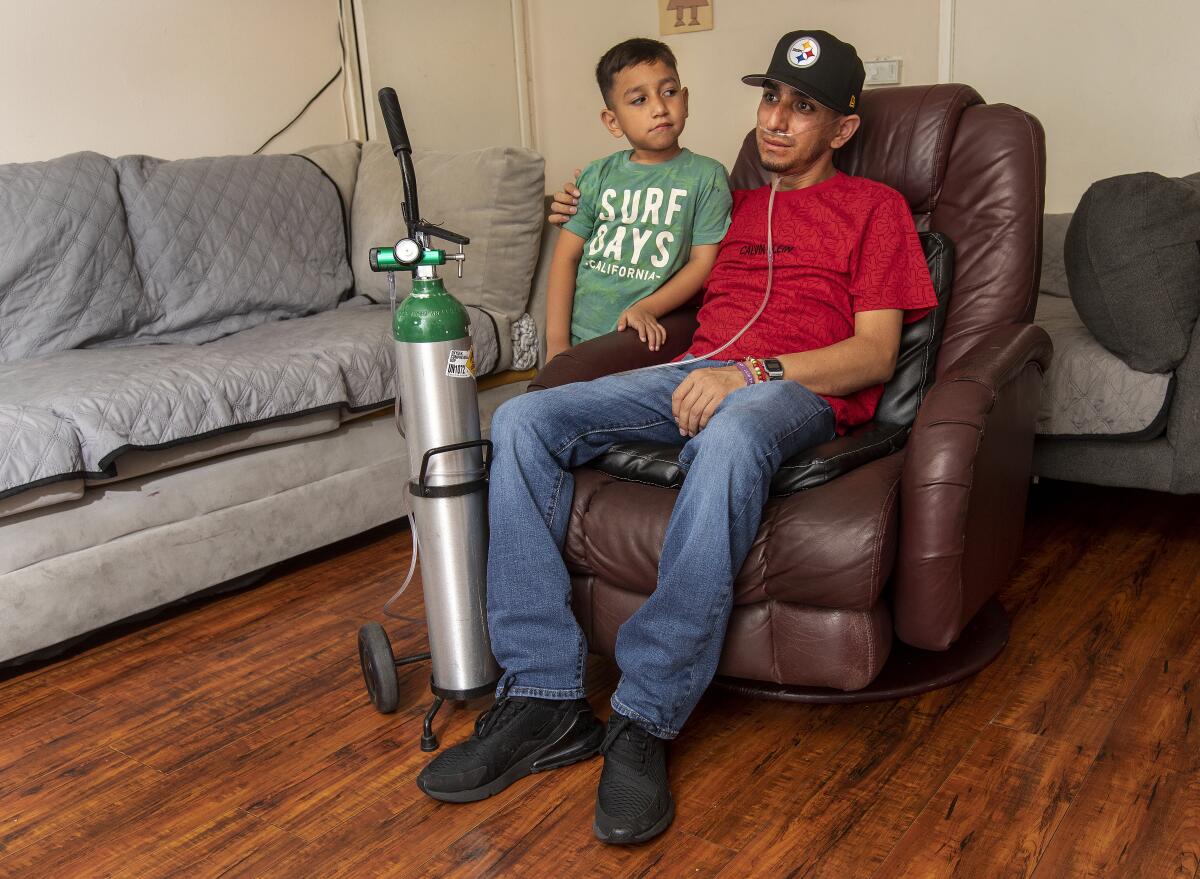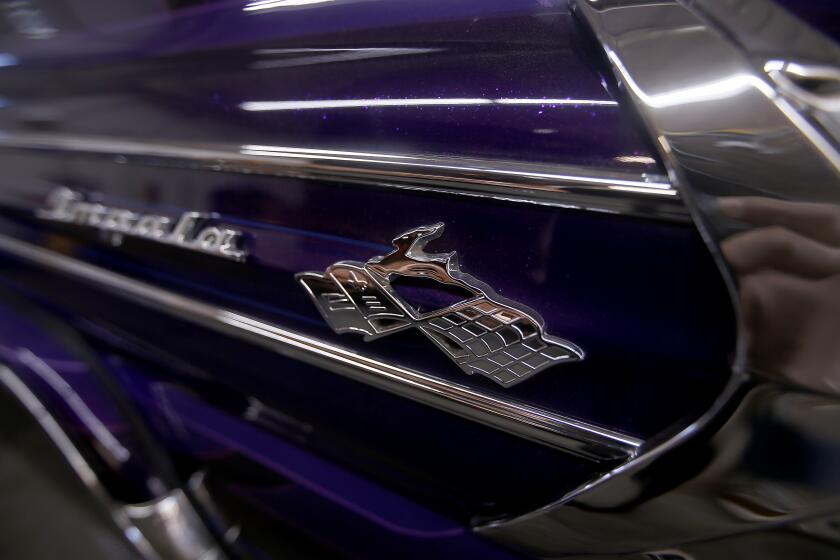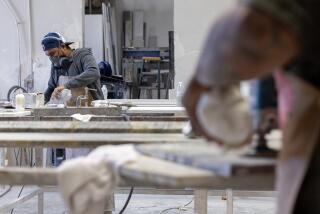No one should have to die for our fancy countertops

- Share via
I renovated my kitchen two years ago, and now I can’t help but wonder: Is someone sick or dying because of my design choices?
Among the decisions I had to make was which material would replace the cracked and stained yellow tile countertop that was installed in the 1950s. I admired the look of wood, but ultimately chose a sparkly quartz.
I am not the only person who has made this choice for a kitchen or bath redo. In recent years, quartz, or engineered stone, has become the most popular material for slick-looking countertops, and the multibillion-dollar industry is only expected to grow. Quartz isn’t cheap, but its attractive appearance (the options for color and pattern are seemingly endless) and durability make it worth the extra cost. It’s nearly impossible to burn or stain, which is a problem with wood no matter how well you maintain it.
The booming popularity of countertops made of engineered stone has driven a new epidemic of silicosis, an incurable lung disease, researchers have found.
Those are things I discussed with the experts at the tile and countertop suppliers. At no time did we talk about the hidden costs of the option, specifically that the people — mainly young Latinos — who cut engineered stone countertops are getting sick and dying from silicosis, a disease I had never even heard of.
Or that workplace health officials have known for years about the dangers associated with this line of work and rampant noncompliance with safety measures at work sites, but that it is largely unknown to consumers and even workers themselves. Or that dozens of people in the San Fernando Valley, where the engineered stone industry is concentrated, are currently sick with this incurable respiratory disease, which is caused by breathing in the silica dust released when quartz is cut and has had a local fatality rate as high as 20%. Or that at least 10 workers have died from silicosis between 2019 and 2022, and many others are severely disabled.
I only learned these things recently, like many other Times readers, from the story by Emily Alpert Reyes and Cindy Carcamo that put a spotlight on this condition and the industry — and sparked a discussion about what can be done to keep workers safe. Assemblymember Luz Rivas (D-North Hollywood) wrote on X that she had already begun working on legislation to be introduced next session. She said later that the story helped rally attention and support by labor advocates.
Silicosis, a disease caused by silica dust produced when workers cut and grind engineered stone, is afflicting workers. What consumers can do about it.
This epidemic of silicosis, as health experts have put it, has been on the radar of state and county health officials for some months after concerns were raised by physicians at Olive View-UCLA Medical Center who were seeing an uptick in cases. The state is working on emergency regulations for those who cut engineered stone, even though regulators acknowledge that it may not be possible to make this job completely safe for workers.
CAL/OSHA officials wrote in a May report that “engineered stone may be so hazardous that even properly designed engineering controls and work practices may be unable to prevent RCS [respirable crystalline silica] exposures and silicosis among the workers who cut, shape and polish it.” Furthermore, many of the workers who are suffering from silicosis reported that they wore respirators and their workplaces incorporated safety methods, such as using water to keep dust down.
California rules should responsibly phase out chromium-6 so chrome platers aren’t allowed to dump the cancer-causing chemical into neighborhoods.
If there is no way to keep quartz cutters safe, should engineered stone fabrication be banned? Perhaps. That is one of the options that Los Angeles County health officials will explore in a report requested by Supervisors Lindsey Horvath and Holly Mitchell. Rivas said it is an option that she is looking at as well.
In many ways, the engineered stone situation resembles the issue of chrome plating, another industry concentrated in Southern California that is all about aesthetics (think spiffed-up cars with shiny chrome grills and rims ) but comes with an extremely toxic byproduct. In that case, the dangerous substance is carcinogenic hexavalent chromium that metal-finishing operations release into the air at levels that are extremely unsafe for the neighboring communities. State air regulators this year finally approved rules that will require the industry to transition to safer compounds beginning in 2024.
It’s good that lawmakers and regulators have taken notice of this terrible situation, but it does still feel like there’s an important element missing — consumer education. If I had known that choosing quartz put workers’ lives at risk, I would have picked another countertop that doesn’t come with a side of guilt.
There is really no excuse to allow dangerous working conditions for a product that is used for purely aesthetic reasons when there are safer — and equally attractive — options.
More to Read
A cure for the common opinion
Get thought-provoking perspectives with our weekly newsletter.
You may occasionally receive promotional content from the Los Angeles Times.













